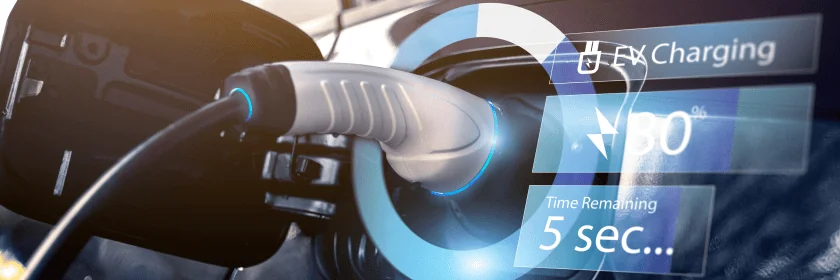In recent years, the global transition toward cleaner and more sustainable transportation has accelerated at an unprecedented pace. Electric vehicles (EVs), electric buses, and electric two- and three-wheelers are no longer futuristic concepts they are part of our everyday reality. At the heart of this transformation lies a crucial enabler: Energy Storage for E Mobility. Without reliable, efficient, and scalable storage solutions, the dream of widespread electrified mobility cannot be realized.
This article explores how energy storage is shaping the future of mobility, why it is so critical, the technologies driving innovation, and how industries and cities can benefit from adopting smarter storage systems.
Why Energy Storage Matters for E Mobility
The performance, cost, and adoption of electric mobility solutions depend heavily on energy storage systems. Unlike conventional vehicles that rely on fossil fuels, electric mobility requires advanced battery systems to store and deliver energy efficiently.
Here’s why energy storage is essential for e mobility:
- Range and Performance: High-capacity batteries allow EVs to travel longer distances, reducing range anxiety for drivers.
- Charging Efficiency: Fast-charging capabilities depend on advanced battery chemistry and storage design.
- Grid Integration: Energy storage enables EVs to act as mobile energy units, supporting smart grids through Vehicle-to-Grid (V2G) technologies.
- Sustainability: Efficient storage reduces overall energy consumption and enables the use of renewable power sources such as solar and wind.
In short, without reliable energy storage, e mobility would struggle to compete with traditional fuel-based transport.
Technologies Driving Energy Storage for E Mobility
Several energy storage technologies are advancing the e mobility sector. While lithium-ion batteries dominate the market, research and innovation continue to push boundaries.
1. Lithium-Ion Batteries
The most widely used energy storage solution, lithium-ion batteries offer high energy density, long life cycles, and decreasing costs due to mass adoption. They are the backbone of EVs, from compact cars to commercial trucks.
2. Solid-State Batteries
A next-generation technology, solid-state batteries replace liquid electrolytes with solid materials. They promise higher safety, faster charging, and greater energy capacity potentially doubling the range of EVs.
3. Supercapacitors
Supercapacitors are ideal for applications requiring rapid bursts of energy, such as regenerative braking systems. While they lack the energy density of batteries, they provide high power output and extended lifespan.
4. Hydrogen Fuel Cells
Although technically not a battery, hydrogen fuel cells act as an energy storage and conversion system for EVs. They are particularly suited for long-haul transport and heavy-duty applications, where battery weight and charging time are limitations.
Benefits of Energy Storage in E Mobility
Adopting advanced energy storage systems brings significant advantages across industries, cities, and individual users:
- Cost Efficiency: Longer-lasting batteries reduce operational costs over time.
- Sustainability: Encourages the adoption of renewable power, reducing carbon emissions.
- Scalability: From personal vehicles to public transportation fleets, energy storage solutions can be adapted to different scales.
- Smart Integration: With technologies like V2G, stored energy can be fed back into the grid, stabilizing supply during peak demand.
These benefits are driving both governments and private companies to invest heavily in energy storage for e mobility.
Challenges Facing Energy Storage for E Mobility
While progress is impressive, challenges remain in widespread adoption:
- Battery Costs: Although prices have fallen significantly, large-scale adoption still requires further cost reductions.
- Raw Material Supply: Lithium, cobalt, and nickel are finite resources, raising sustainability and supply chain concerns.
- Charging Infrastructure: Fast and widespread charging networks are essential to support large EV fleets.
- Recycling and Disposal: As EV batteries reach end-of-life, efficient recycling solutions are critical to minimize environmental impact.
Overcoming these challenges requires collaboration across industries, governments, and innovators.
Energy Storage and the Future of Smart Cities
The synergy between e mobility and smart energy storage goes beyond vehicles. Cities are increasingly adopting integrated systems where transportation, energy, and data converge.
Imagine a city where electric buses draw power from solar-powered charging stations, where private EVs return surplus energy to the grid during peak hours, and where AI-driven analytics optimize charging schedules. This vision is becoming reality thanks to advancements in energy storage for e mobility.
Smart cities of the future will rely on these systems to ensure clean air, efficient transport, and sustainable growth.
Global Market Growth in Energy Storage for E Mobility
The global market for EV batteries and energy storage solutions is projected to grow exponentially in the coming decade. Factors fueling this growth include:
- Government incentives for EV adoption.
- Increasing investment in battery R&D.
- Rising consumer demand for sustainable transportation.
- Global climate targets pushing the shift away from fossil fuels.
According to market forecasts, the energy storage market for mobility applications could surpass hundreds of billions of dollars by 2035, making it one of the most dynamic sectors in the clean energy revolution.
Cmpes Global: Powering the Future of Energy Storage
At Cmpes Global, we understand the critical role energy storage plays in enabling the transition to sustainable mobility. Our focus is on delivering innovative, reliable, and efficient energy storage solutions tailored to meet the evolving needs of electric vehicles and mobility ecosystems.
From advanced battery technologies to smart integration with renewable energy systems, we are committed to driving the future of transportation. Whether for personal EVs, commercial fleets, or urban mobility networks, Cmpes Global is your trusted partner in powering e mobility with cutting-edge energy storage solutions.
Conclusion
The rise of electric mobility is unstoppable, but its success depends on the evolution of energy storage. With advancements in lithium-ion, solid-state, and alternative storage technologies, the future promises cleaner, smarter, and more efficient transport solutions.
As cities and industries continue to embrace this transformation, energy storage will remain the backbone of e mobility. Companies like Cmpes Global are at the forefront of this change, providing the technologies and solutions that power the world toward a sustainable future.

